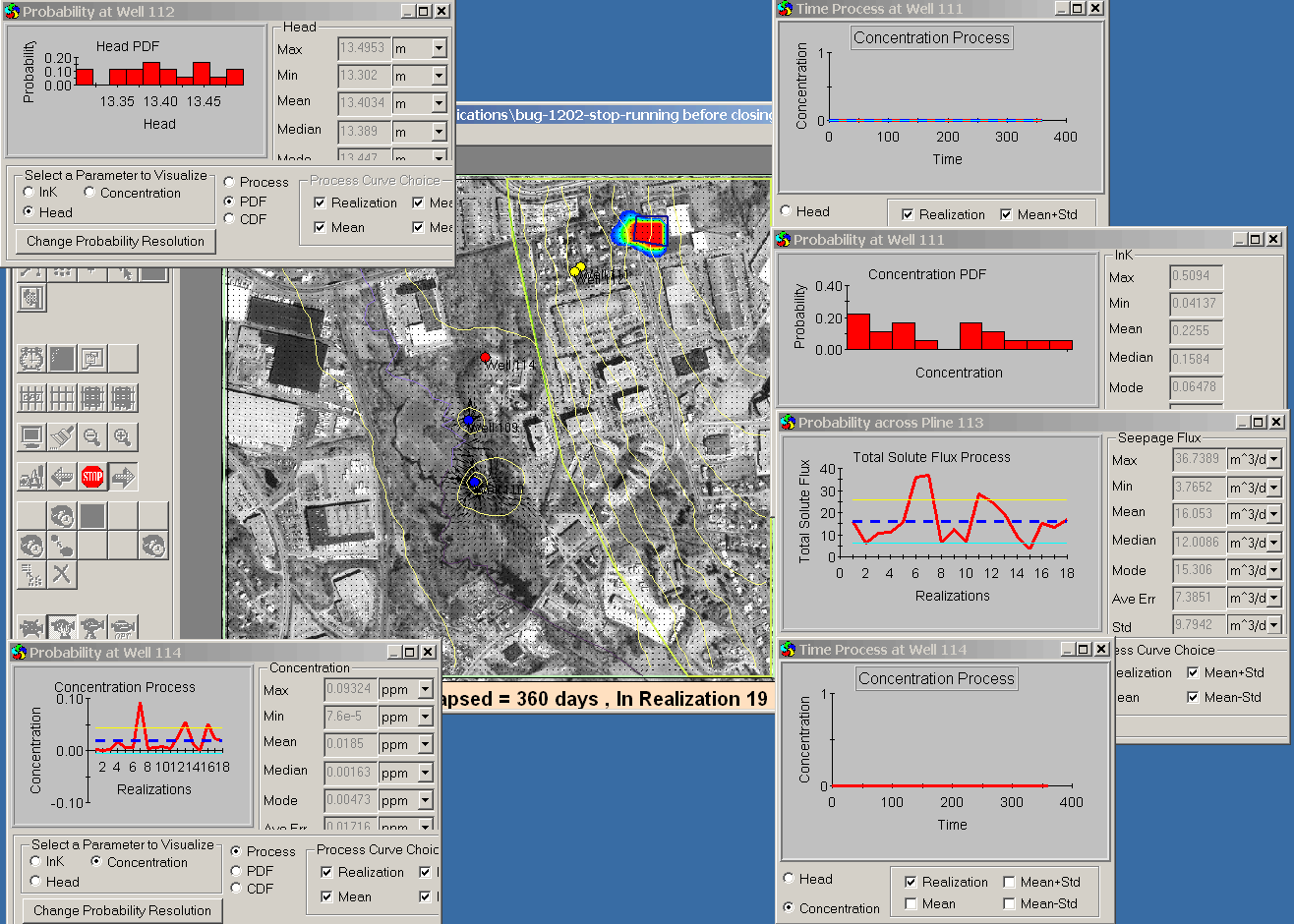Utilizing the practical and engaging context documented in the best seller and movie "A Civil Action", students in a Groundwater Modeling class investigate the high-profile superfund groundwater contamination site in Woburn, Massachusetts.
The course integrates the student's education and research roles, and stress active, hands-on,
and collaborative learning and practical problem solving skills and critical thinking abilities
with less dependence on traditional lectures. The course develops simultaneously students' problem
solving skills and disciplinary knowledge bases by placing them in the active role of researchers
and problem solvers confronted with ill-structured real -world situations. Students learn applied
groundwater modeling by actually conducting a comprehensive model-based characterization study of
the Woburn site. The class is divided into teams who act as consultants representing,
respectively, the victims/local community and the potential responsible parties and provide
expert witness for their respective "clients". Using IGW each student “consultant”
team develop and calibrate a groundwater flow and contaminant transport model that is used to
characterize the complex groundwater contamination site and address a series of focal problems
surrounding the controversy regarding the fate and transport of the groundwater contaminants at
the various industrial sites in the vicinity of the city drinking wells.
The course involve group work, class debate, brainstorming, written report, and final
oral defense on the groundwater flow and solute transport issues at the Woburn site. The instructor
organizes and pilots this cycle of activity, and teaches groundwater modeling concepts, principles,
and skills within that context. The course adopts performance-based evaluations that take as
the object of assessment the final product or the groundwater model that students develop.
Specifically, students are evaluated based on how well they can characterize the site given the
limited data available and on how effectively they communicate and defend their results, findings,
and the decision-making process to their client and the public (in this case it is the
instructor and their peer students) both orally and in a formal technical report. The assessment
tests the whole-system learning that emphasizes such activities as defining problems, making
assumptions, testing hypothesis, developing strategies, trial and errors, evaluating data and data
worth, dealing with heterogeneity and uncertainty, detecting "signal" from seemingly random
measurements, integrating sciences, constructing arguments, and debating conclusions.
